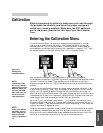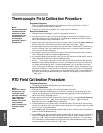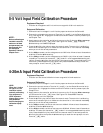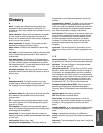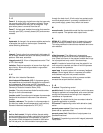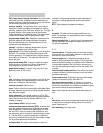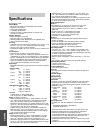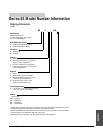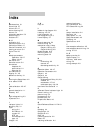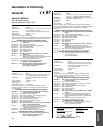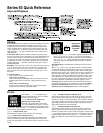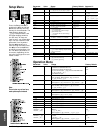
Watlow Series 93 Appendix ■ A.11
PID Proportional, integral, derivative. A control mode
with three functions: proportional action dampens the
system response, integral corrects for droop, and deriva-
tive prevents overshoot and undershoot.
process variable The parameter that is controlled or
measured. Typical examples are temperature, relative
humidity, pressure, flow, fluid level, events, etc. The high
process variable is the highest value of the process
range, expressed in engineering units. The low process
variable is the lowest value of the process range.
programmed display data Displayed information that
gives the operator the intended process information,
such as intended set point, intended alarm limit, etc.,
corresponding to temperature.
prompt A symbol or message displayed by the con-
troller that requests input from the user.
proportional Output effort proportional to the error from
set point. For example, if the proportional band is 20°
and the process is 10° below set point, the heat propor-
tioned effort is 50 percent. The lower the PB value, the
higher the gain.
proportional band (PB) A range in which the propor-
tioning function of the control is active. Expressed in
units, degrees or percent of span. See PID.
proportional control A control using only the P (pro-
portional) value of PID control.
R
rate Anticipatory action that is based on the rate of tem-
perature change, and compensates to minimize over-
shoot and undershoot. See derivative.
reference junction See junction.
reset Control action that automatically eliminates offset,
or droop, between set point and actual process tempera-
ture. Also see integral.
reset, automatic The integral function of a PI or PID
temperature controller that adjusts the process tempera-
ture to the set point after the system stabilizes. The
inverse of integral.
reset windup inhibit See anti-reset.
resistance temperature detector (RTD) A sensor that
uses the resistance temperature characteristic to mea-
sure temperature. There are two basic types of RTDs:
the wire RTD, which is usually made of platinum, and
the thermistor, which is made of a semiconductor materi-
al. The wire RTD is a positive temperature coefficient
sensor only, while the thermistor can have either a nega-
tive or positive temperature coefficient.
reverse action An output control action in which an
increase in the process variable causes a decrease in
the output. Heating applications usually use reverse
action.
RTD See resistance temperature detector.
S
set point The desired value programmed into a con-
troller. For example, the temperature at which a system
is to be maintained.
switching sensitivity In on/off control, the temperature
change necessary to change the output from full on to
full off. See hysteresis.
T - Y
thermal system A regulated environment that consists
of a heat source, heat transfer medium or load, sensing
device and a control instrument.
thermocouple (t/c) A temperature sensing device
made by joining two dissimilar metals. This junction pro-
duces an electrical voltage in proportion to the difference
in temperature between the hot junction (sensing junc-
tion) and the leadwire connection to the instrument (cold
junction).
thermocouple break protection The ability of a control
to detect a break in the thermocouple circuit and take a
predetermined action.
three-mode control Proportioning control with integral
(reset) and derivative (rate). Also see PID.
time proportioning control A method of controlling
power by varying the on/off duty cycle of an output. This
variance is proportional to the difference between the set
point and the actual process temperature.
triac A solid state device that switches alternating cur-
rent.
Z
zero cross Action that provides output switching only at
or near the zero-voltage crossing points of the ac sine
wave. See burst fire.
zero switching See zero cross.
Appendix



